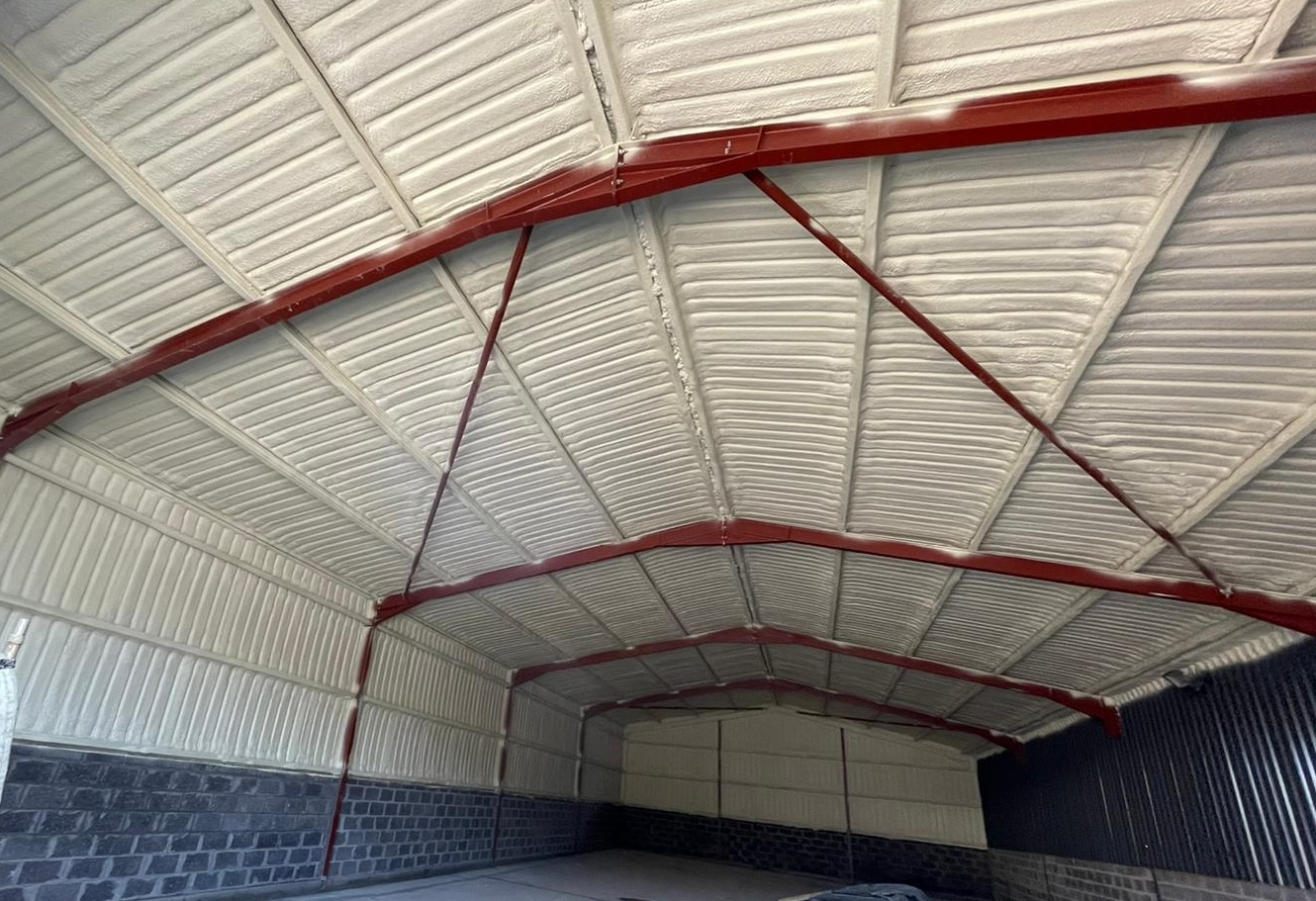Introduction
Agricultural operations rely on well-regulated environments to maintain productivity and efficiency. Insulation plays a key role in controlling temperatures, reducing energy costs, and protecting livestock, crops, and equipment. Properly insulating barns, storage facilities, and processing buildings can lead to substantial savings while enhancing overall functionality.
This guide explores how agricultural building insulation reduces energy expenses, improves environmental control, and extends the lifespan of farm structures.
The Role of Insulation in Energy Efficiency
Understanding Heat Transfer in Agricultural Buildings
Insulation limits heat transfer by creating a thermal barrier between indoor and outdoor conditions. This is particularly important in agricultural structures where temperature fluctuations can affect livestock health, seed germination, and machinery performance. Poor insulation leads to excessive heat loss in winter and heat gain in summer, increasing dependency on artificial heating and cooling systems.
Key Benefits of Insulation in Agricultural Facilities
- Lower Energy Costs – Reducing heat loss and gain decreases the need for heating and cooling systems.
- Improved Climate Control – Stable temperatures enhance livestock comfort and crop preservation.
- Condensation Prevention – Minimizes moisture buildup, reducing the risk of mold, corrosion, and structural damage.
- Extended Equipment Lifespan – Protects machinery and stored materials from extreme temperature swings.
Types of Insulation for Agricultural Buildings
Spray Foam Insulation
Spray foam insulation provides an air-tight seal, offering superior thermal resistance compared to traditional materials. It expands upon application, filling gaps and preventing air leaks that contribute to energy loss.
Advantages:
- High R-value per inch for effective thermal resistance.
- Seals cracks and crevices, reducing drafts and moisture penetration.
- Adds structural integrity to walls and ceilings.
- Long lifespan with minimal maintenance.
Fiberglass Insulation
Fiberglass batts or rolls are cost-effective solutions often used in walls and ceilings. While effective, they require precise installation to prevent gaps that could reduce efficiency.
Advantages:
- Lower upfront cost compared to spray foam.
- Available in various thicknesses and R-values.
- Non-combustible and resistant to moisture damage.
Rigid Foam Board
Rigid foam board provides high insulation value with minimal thickness, making it suitable for walls, ceilings, and foundations. It offers excellent moisture resistance, preventing mold growth in humid environments.
Advantages:
- High durability and moisture resistance.
- Ideal for applications where space is limited.
- Suitable for interior and exterior use.
Reflective Insulation
This type of insulation utilizes aluminum-based materials to reflect heat rather than absorbing it, making it highly effective for reducing summer heat gain in barns and greenhouses.
Advantages:
- Reduces radiant heat transfer, keeping interiors cooler.
- Works well in combination with other insulation types.
- Easy to install in existing structures.
Optimizing Insulation Performance
Sealing Air Leaks
Even high-quality insulation is ineffective if air leaks are present. Sealing gaps around doors, windows, and vents prevents unwanted heat exchange, improving overall efficiency.
Proper Ventilation
While insulation helps regulate temperatures, ventilation is necessary to prevent excess humidity and ensure adequate airflow. Combining insulation with well-placed vents maintains indoor air quality and reduces moisture-related issues.
Moisture Control Measures
Excess moisture can compromise insulation effectiveness and lead to mold growth. Vapor barriers and proper drainage help maintain insulation integrity.
Choosing the Right Insulation for Each Building
Different agricultural buildings require different insulation solutions. For example:
- Livestock barns benefit from spray foam insulation to maintain warmth in winter.
- Storage facilities require rigid foam board or reflective insulation to manage temperature fluctuations.
- Greenhouses often use reflective insulation to regulate heat gain.
Insulation Installation and Cost Considerations
Factors Affecting Installation Costs
The cost of insulating agricultural buildings depends on several factors, including:
- Building size and structure type – Larger buildings require more materials and labor.
- Insulation material – Spray foam generally costs more upfront but offers long-term savings.
- Labor and installation complexity – Hard-to-reach areas may require specialized equipment.
Return on Investment
Proper insulation provides measurable returns by reducing heating and cooling expenses. Farmers often recoup insulation costs through energy savings within a few years.
For expert insulation solutions that maximize energy savings, contact Foam Worx Insulation at (507) 407-6688 or email [email protected].
FAQs
1. How much does agricultural building insulation cost?
Costs vary based on insulation type, building size, and installation complexity. Spray foam insulation is more expensive upfront but provides long-term energy savings.
2. What is the best insulation for barns?
Spray foam insulation is ideal for barns due to its high R-value, air-sealing properties, and resistance to moisture.
3. How does insulation prevent condensation in farm buildings?
Insulation reduces temperature fluctuations, preventing warm air from meeting cold surfaces where condensation can form.
4. Can I install insulation myself?
DIY installation is possible for some insulation types, such as fiberglass batts, but professional installation ensures better coverage and efficiency.
5. Does insulation help control humidity?
Yes, insulation combined with proper ventilation helps manage humidity levels, reducing mold growth and structural damage.
6. Is spray foam insulation safe for livestock?
Yes, once cured, spray foam is non-toxic and helps create a more stable environment for livestock.
7. How long does insulation last in agricultural buildings?
Most insulation materials last 20-50 years, with spray foam providing some of the longest-lasting benefits.
8. Will insulation reduce heating and cooling costs?
Yes, properly installed insulation significantly reduces energy consumption by maintaining stable indoor temperatures.
9. What is the R-value, and why is it important?
R-value measures insulation’s resistance to heat flow. Higher R-values indicate better thermal performance.
10. How do I choose the right insulation for my farm?
Consider your building type, climate, and budget. Consulting with a professional ensures the best choice for long-term energy savings.





